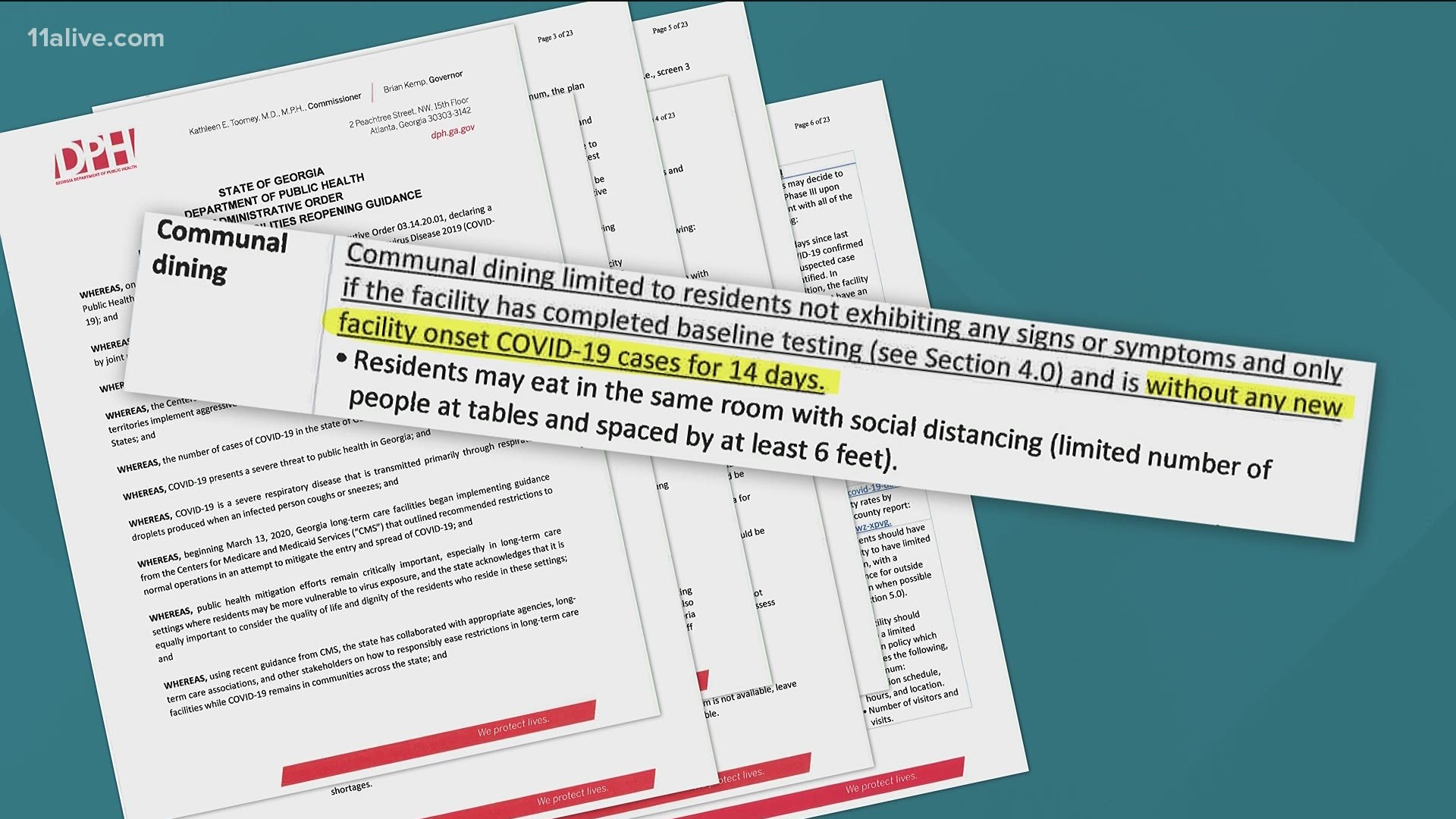ATLANTA — Mixed reaction on Wednesday after the state set new rules for visitation at long term care facilities.
Tony Marshall, the president of the Georgia Health Care Association, says the facilities themselves are just happy to have some clear guidance on what to do.
The plan is 24 pages long and lists a series of hurdles, many of them outside the facilities’ control, such as community COVID-19 case count and positivity rate.
But inside the walls of nursing homes and rehabilitation centers, there’s plenty to do. The state is requiring infection control and testing plans. It wants centers to figure out how they will staff visitation and keep PPE supplies maintained.
If it can meet those internal marks, facilities without any new COVID-19 cases for two weeks can reopen their dining halls. Marshall says it’s not just a source of food, but also companionship.
“It’s critically important. One of the greatest challenges for our center staff has been to ensure that we're adequately dealing with any psychosocial issues related to isolation," Marshall explained.
RELATED: 'I miss being around people': Georgia couple married 52 years explain isolation in nursing home
Still, it’s easier said than done. Marshall couldn’t say how many locations had been COVID-19 free for two weeks, but according to this week’s White House report, 24-percent of Georgia’s long-term care facilities reported a new case among either a resident or staff member.
Phase two is even harder to meet. For that, a facility must go 28 days without a COVID-19 case, plus the county where the facility is located must have fewer than 100 new cases per 100,000 residents, and a positivity rate of under 10 percent. But, if all of those requirements are met, it can resume small group activities.
Cut those numbers in half, to less than 50 cases per 100,000 residents in the county and a positivity rate of less than 5 percent and a facility can move to phase three. That’s when the salon areas can also re-open.
“For any of us that have been around this profession for a long time, we know the importance of being able to go to the beauty shop,” said Marshall.
But groups like Georgia Caregivers for Compromise say it's visitation that matters most. And right now, every metro county is still stuck at phase one. Per the state’s plan, that means any in-person visitation will only be for those residents extremely ill. Even then, it’s at the facilities’ discretion.
“It is difficult because one of the first criteria you have to have is adequate staffing," Marshall explained.
The reopening plan makes clear that a staff member under any phase must be present during visitation to maintain social distancing and infection control.
Dozens of nursing homes have received staffing support from the state to manage outbreaks. The plan says any facility still receiving that support cannot expand its visitation.
It won’t be until phase three that facilities can decide whether to allow visits inside.
When asked what the hardest part of the plan will be to implement, Marshall said testing. In counties where new case rates are high, staff must be tested twice a week, and those results must come back each time within 48 hours.
“It is going to be a challenge. And unfortunately, we have 76 counties in Georgia where, where that twice a week testing will be required," Marshall said.
The testing requirement is also going to be expensive. While the state has free testing sites and recommends staff go there to offset costs, Marshall says many don’t turn results around fast enough to qualify. He adds, some nursing centers, especially those in rural areas, are nowhere near a testing location.
“They may be 20 to 30 miles away from our centers and in some of our rural communities, they may be hundreds of miles away," Marshall explained.
He says families should be encouraged that there’s finally a plan to follow, but admits getting the kind of visitation they want – is a long way off.

